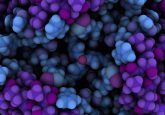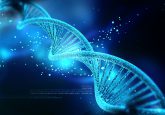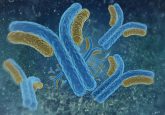DNA nanomachines to detect HIV diagnostic antibodies

A nanometer-scale DNA ‘machine’ has been designed and synthesized by an international team of researchers with customized modifications that enable it to recognize a specific target antibody. This novel approach could help support the development of rapid low-cost and point-of-care antibody detection, eliminating the treatment-initiation delays and increasing healthcare costs, which are seen with current techniques. The research is presented in this month’s Angewandte Chemie.
A structural change (or switch) is caused by the binding of the antibody to the DNA machine and this produces a light signal. The sensor acts rapidly, within 5 minutes, and does not need to be chemically activated. In this way targeted antibodies are easily detected, even in complex clinical samples such as blood serum.
“One of the advantages of our approach is that it is highly versatile,” said Professor Francesco Ricci, senior author of the study, of University of Rome Tor Vergata (Rome, Italy). “This DNA nanomachine can be in fact custom-modified so that it can detect a huge range of antibodies, this makes our platform adaptable for many different diseases.”
“Our modular platform provides significant advantages over existing methods for the detection of antibodies,” stated Professor Vallee-Belisle, another senior co-author on the study, of the University of Montreal (Canada). “It is rapid, does not require chemical reagents, and may prove to be useful in a range of different applications such as point-of-care diagnostics and bioimaging.”
“Another nice feature of this platform is its low cost,” said Professor Kevin Plaxco of the University of California, Santa Barbara (CA, USA). “The materials needed for one assay cost about 15 cents, making our approach very competitive in comparison with other quantitative approaches.”
“We are excited by these preliminary results, but we are looking forward to improving our sensing platform even more” said Simona Ranallo, the first author of the paper and a PhD student in Professor Ricci’s group at the University of Rome. “For example, we could adapt this platform so that the signal of the nanoswitch may be read using a mobile phone. This will make our approach really available to anyone! We are working on this idea and we would like to start involving diagnostic companies.”
Sources: Detecting HIV diagnostic antibodies with DNA nanomachines; Ranaloo S, Rossetti M, Plaxco KW et al. A modular, DNA-based beacon for single-step fluorescence detection of antibodies and other proteins. Angewandte Chemie doi:10.1002/ange.201505179 (2015) (Epub ahead of print).






